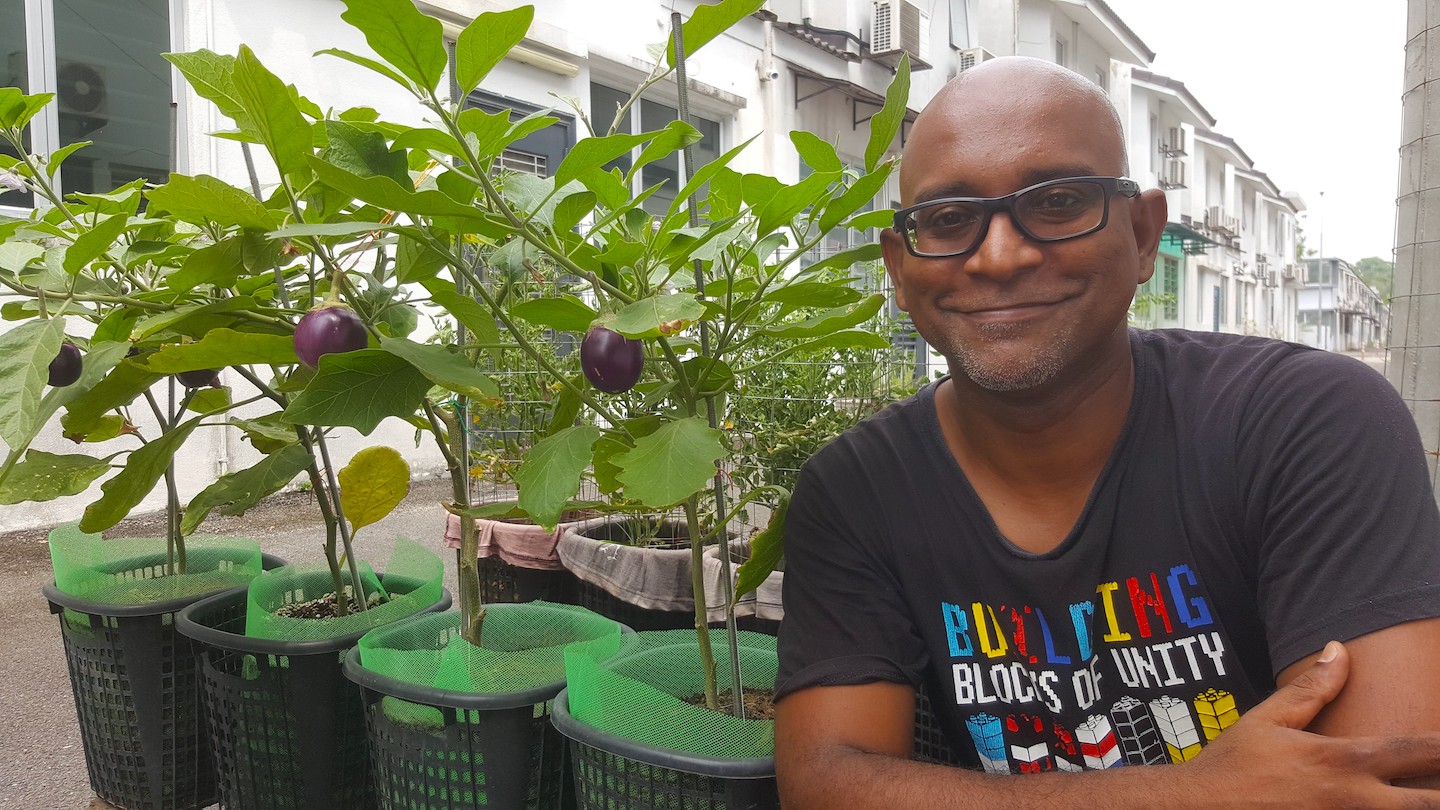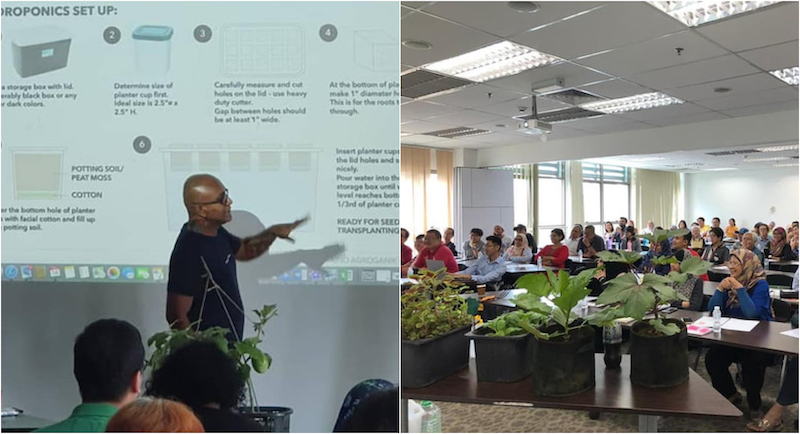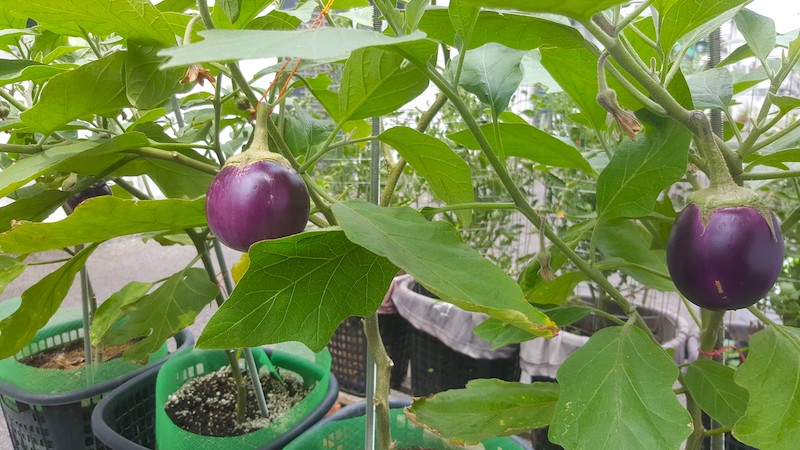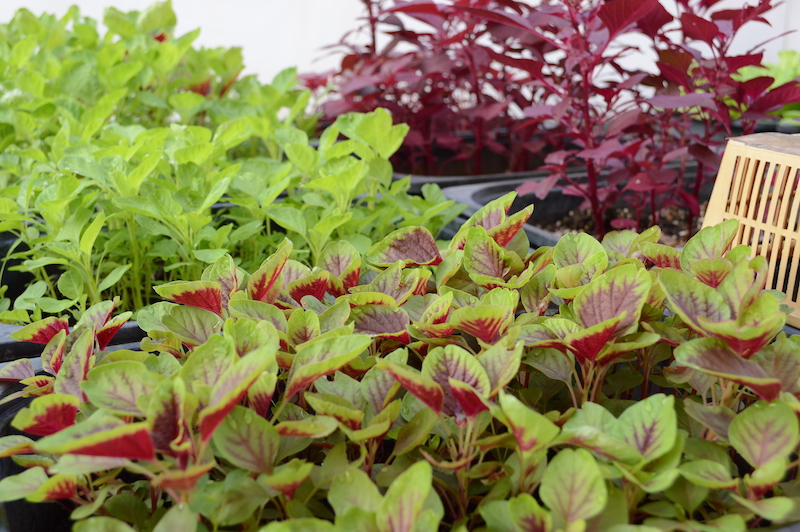
The 42-year-old Balan Nadarajan with a business background has started gardening since 2012 (All photos: The Urban Farmer)
Disturbed by horror stories of chemical pesticides and fertilisers, Balan Nadarajan was thinking of his daughter when he decided to plant organic vegetables to feed his family. Unfortunately, he wasn’t a natural.
“I just couldn’t plant or grow anything. I had no knowledge on planting even a simple plant. So it was really tough for me. I gave up a few times,” he says.
Thinking to himself that there has to be a method to the madness, Nadarajan went back to basics. “I put aside all the website resources, and started from scratch. I got into planting my own vegetables through trial and error. For example, one of the experiments I did was to learn about soil — what is the best soil you can use, and how soil affects the growth of plants and stuff like that,” he explains.
Today, Nadarajan has an edible garden in the most unexpected place. “Without blocking the road, I started to farm at the side of the lane next to my house. I have slowly expanded to three houses now. So when my neighbours open their door, there’s a garden, and honestly they are so supportive,” he adds. Around 60 to 70% of Nadarajan’s household vegetables come from his garden.
The Urban Farmer has been running a Fifteen Minutes Farmer programme to teach people how to make their own edible garden in a structured three-hour class. During the Movement Control Order, Nadarajan has not been able to conduct classes but he continued to promote organic farming nonetheless.
balan_class.jpg

He also intends to publish video tutorials to help people get started. “I have this ambition to start an urban farming training centre where people can come in for a one-day workshop where they can learn everything hands-on about urban farming, from setting up all the way to harvesting,” he says.
If you’re eager to get started, here’s Nadarajan’s top tips for starting your own edible garden:
Location is key
Think about how much sunlight the space is getting and consider where the sun is rising and setting. If you’re getting direct sunlight you can plant fruiting vegetables because they need at least four to five hours of direct sunlight everyday. If it's indirect sunlight, then you can probably try leafy vegetables that don't require that much sunlight everyday. You should also have even ground, easy access to water, and drainage for excess water flow.
Fruits or shoots
Always start with something easy and straightforward such as kangkung, bayam and sawi. The easiest fruiting vegetables to start with are definitely okra, chili and eggplant. Execution-wise, use planter boxes for leafy vegetables and elevate the boxes at least six inches above ground for better aeration. You can use DIY stand frames made out of wood and bricks. For fruiting vegetables, use grow pots that are at least 5 gallons. Fabric grow bags are also becoming popular as they encourage root pruning and they don’t hold water (so they’re not at risk of root diseases).
Plan ahead to make adjustments along the way
Space planning is really important. Always make it modular so that it’s more scalable. By planting in boxes, you can extend or reduce based on how many “containers” you want to have.
It’s all about the earth
Good soil management is 50% of your success in urban farming and the other 50% is pest and disease management. In terms of soil, a lot people think that walking into a nursery and getting a pack of soil is enough. But it's not as simple as that. A healthy soil composition consists of a balanced draining medium (sand), water retaining medium(Cocopeat), organic matter (compost) and ideal pH level between 6 to 7 (pH testers can be bought online for RM20-30).
Know when to seed
Leafy plant seeds can be directly sprinkled on the soil. And for vegetables such as sawi, kai lan and pak choy, thinning can be done after two weeks. For fruiting types such as okra, bitter gourd and cucumber, seeds should be directly sown into pots. Whereas chili, eggplant and tomato are best seeded on a tray first and transplanted after three or four true leaves appear. The transition from tray to pot should take place in the evening to reduce transplant-shock.
Water regularly but effectively
You should water your plants everyday in the morning. Use an adjustable nozzle and set it to “shower mode” when watering seedlings to avoid damaging the stems. Avoid watering after 6pm as the moisture can expose plants to pests and diseases. Organic fertilising can be done every two weeks - make sure to water nicely after fertilising. Organic fertilising can be done every two weeks, but make sure to water nicely after fertilising.
Keep pests and diseases at bay
Making organic pesticides won’t cost you much money and it's effective. Fill half a cup with water and add one tablespoon of hand wash liquid and two tablespoons of neem oil and stir well. Add the mixture into a 1 litre spray bottle and top it up with water. Mist the top and bottom part of leaves in the evening, ideally twice a week.
Harvest on time
This is an exciting fact about plants: They can think as well. The moment you let the fruit over-mature, the plant will tell itself “my time has come”. Which means now the quality of that produce is going to be much lower.
Harvesting on time will make sure that the plant will keep producing without getting over-mature. Most leafy plants can be harvested in three to four weeks, and fruiting types can be harvested when the fruits reach the ideal size. For example, okras will start to fruit in about 45 days. When harvested on time, the life of the okra plant can last about six or even eight months.
The Urban Farmers’ Fifteen Minute Farmer class will resume soon. Sign up and follow their Facebook page for upcoming workshops. For more information, see here.





